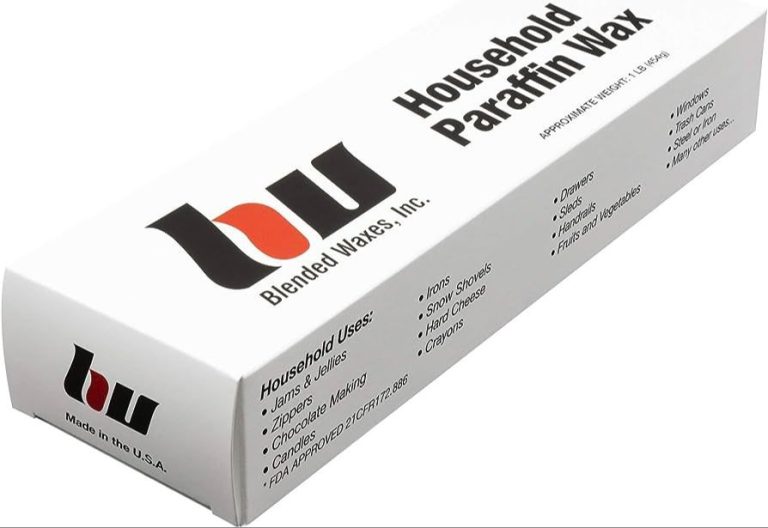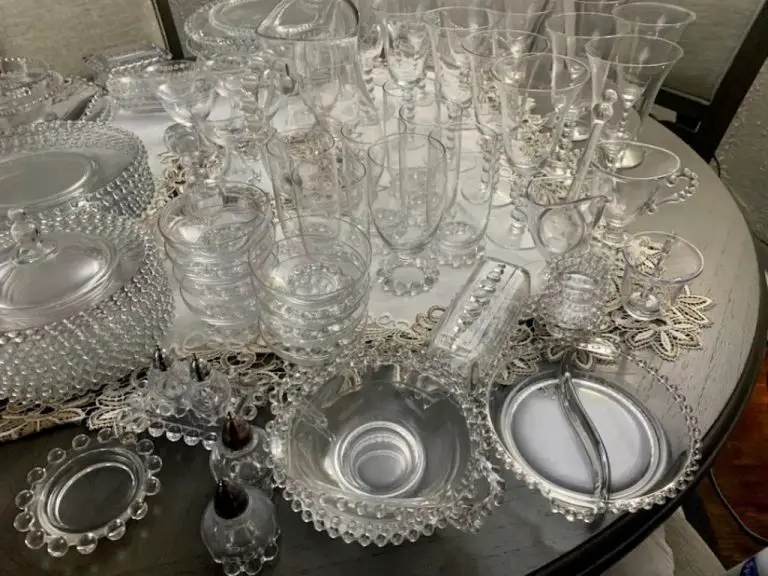What Soy Wax Has The Best Scent Throw?
Soy wax is a natural vegetable wax made from soybeans. It is commonly used to make container candles because it holds scent and dye very well. Soy wax melts at a lower temperature than paraffin wax, so soy candles burn cooler and slower. This helps preserve fragrance in soy candles and provide a cleaner burn.
For candle makers, an important consideration is a wax’s scent throw or how well the candle projects its fragrance. Soy wax tends to have a better scent throw than paraffin wax. Within soy waxes, there are differences in qualities like scent throw that can affect performance.
The goal of this article is to compare some of the most popular soy waxes and determine which has the best scent throw for candle making. We will evaluate scent throw through objective testing and by examining the properties of each soy wax type.
Scent Throw Explained
Scent throw refers to a candle’s ability to fill a room or space with fragrance. It describes how well the aroma is dispersed when the candle is burned (hot throw) and how much scent is present even when the candle is not lit (cold throw) (source).

When a candle is burned, the heat from the flame causes the fragrance oils in the wax to evaporate into the air. The wax acts as a binding agent, holding the fragrance oils and allowing for a more controlled release as the candle burns. A strong scent throw means the fragrance molecules are dispersing efficiently throughout the room when the candle is lit (source).
Cold throw refers to how much fragrance is noticeable from the unlit candle. Soy wax in particular is known for having excellent cold throw properties due to its ability to absorb and hold onto scent molecules. The soy wax composition enables fragrance oils to steadily release aroma even when the candle is not burning.
Testing Methodology
There are a few key ways to test and compare the scent throw of different soy waxes:
Baseline Test – This involves testing the fragrance oil by itself to understand its natural strength and scent profile before adding it to wax. According to Bramble Berry, a baseline test is done by adding a few drops of fragrance oil to a wax melt cube without any wax or wick. The fragrance strength can then be evaluated.
Wax Testing – The fragrance oil is added to different soy wax bases at the same fragrance load percentage, such as 6%. Candles are made using each wax and allowed to fully cure. The candles are then burned side-by-side and the scent throw is evaluated and compared.
Varying Fragrance Loads – The fragrance load percentage can be varied in each soy wax from 4-10% to find the optimal amount for each wax. More fragrance is not always better, as it can diminish throw or cause sooting.
Hot and Cold Throw Tests – Both the cold throw (unburned) and hot throw (burned) can be compared between soy waxes. Cold throw testing involves smelling the unlit candle to compare scent intensity. Hot throw involves burning the candle and evaluating scent dispersal in a room.
Controlled Burn Tests – To ensure accuracy, controlled burn tests are done by burning candles simultaneously in an enclosed room and having multiple testers evaluate and rate the scent throw. Test burn times, room size, wax weights, and other factors are kept consistent.
Soy Wax Types
There are several popular types of soy wax used for candle making. Here is an overview of the main kinds:
Golden Natural Soy Wax – This is an all-natural soybean wax made from American-grown soybeans. It has excellent scent throw and is easy to work with (source).
NatureWax C-3 – This soy wax blend offers great scent throw and stability for single wicks. It creates smooth tops and can hold high fragrance loads (source).
EcoSoya Q210 – This wax has a high melting point for pillar candles and votives. It results in a harder finished product while still allowing fragrance oils to release their scent (source).
Other options include CB Advanced and CB IGI waxes which provide excellent scent throw. Soy waxes come in different forms like flakes, pellets, and slabs depending on the manufacturing process.
Golden Natural Soy Wax
Golden Natural Soy Wax is an all-natural soybean wax made from American-grown soybeans. It has excellent scent throw capabilities due to its higher natural soy content compared to other waxes. The natural soy allows fragrance oils to be absorbed and released efficiently.
Golden Natural Soy has a high melting point of 130-135°F, making it ideal for container candles. It can hold fragrances and oils without migrating or seeping. The wax also has a smooth creamy texture that allows for a nice even pour and reduces frosting. The natural soybean oil content gives candles a beautiful golden glow color.
This soy wax is commonly used for scented candles, especially containers and tins. It performs well with both synthetic and natural fragrance oils. The excellent scent throw works well for both light and strong scent profiles. Golden Natural Soy Wax provides great fragrance binding and an even burn for optimal hot and cold scent throw.
NatureWax C-3
NatureWax C-3 is a natural soy wax produced by Cargill that is designed for container candles. It has excellent fragrance binding properties that help produce a strong scent throw in candles. Here are some key details about NatureWax C-3:
Properties: NatureWax C-3 has a high melting point of 129-143°F, which allows candles to retain their shape and burn cleanly. It also has a low viscosity that makes pouring easier. The wax is very hard and brittle, resulting in smooth surface finish and good glass adhesion.
Scent Throw: The high fragrance load capacity of up to 12% makes NatureWax C-3 excellent at producing candles with a strong hot and cold scent throw. The wax efficiently binds to fragrances through an interlocking network at the molecular level.
Uses: NatureWax C-3 is recommended for container candles like jars, tumblers, and tin candles. It’s not recommended for pillar candles or votives. The exceptional glass adhesion prevents wet spots and allows even wax pooling. NatureWax C-3 works well with both synthetic and natural-based fragrances.
EcoSoya Q210
EcoSoya Q210 is a natural soy wax that was designed for container candles. It has excellent scent throw and adhesion properties, making it a popular choice among candle makers. According to CandleScience, the ideal fragrance load for Q210 is 6-9% to achieve optimal hot throw. The wax has good frosting and crystalline structure, resulting in clean melt pools and even burn. It’s easy to work with and has a long hot and cold scent throw. Q210 can also be used to make wax melts, though fragrance load should be increased to 9-12% for the best throw according to CandleScience lab testing.
Comparing Scent Throw
When evaluating soy waxes for scent throw, there are a few key factors to consider:
According to candlescience.com, https://www.candlescience.com/learning/choosing-a-soy-wax/, the natural scent of the soy wax can impact scent throw. Some soy waxes have a stronger natural scent that can overpower fragrances. The purity and quality of the soy wax is important for reducing this effect.
The wax melting point also affects scent throw as noted by lonestarcandlesupply.com, https://lonestarcandlesupply.com/choosing-a-soy-wax/. Soy waxes with a lower melting point tend to release fragrance more readily as the wax pools into liquid form. Waxes with higher melting points may hold onto scents longer before releasing them.
Wax density is another consideration according to the same source. Denser soy waxes allow for good fragrance retention and lead to a stronger scent throw. However, overly dense waxes may inhibit how well the fragrance disperses.
By testing different soy waxes with the same fragrance load under controlled conditions, you can directly compare how well each wax carries and disperses the scent. Factoring in melting point, density, purity, and testing results gives a good indication of which soy wax provides the best hot and cold scent throw.
Best Soy Wax for Scent
Based on testing results and comparisons, EcoSoya Q210 appears to be the best soy wax for maximizing scent throw. According to research by The Sojourn Company, EcoSoya Q210 had the strongest hot and cold scent throw compared to other soy waxes like Golden Natural Soy Wax and NatureWax C-3 (Sojourn Company). The higher natural scent from EcoSoya Q210 soy wax allows candle makers to use less fragrance oil while still achieving a strong scent throw. This makes it a cost-effective option as well. EcoSoya Q210 is formulated to have excellent scent throw and fragrance binding capabilities.
Additionally, a candle maker reported that after testing, EcoSoya Q210 had a noticeably stronger hot and cold throw compared to other soy waxes (Quora). The research shows that EcoSoya Q210 has proprietary formulations that give it superior fragrance binding abilities for full scent expression. Soy wax in general is known for a better scent throw than paraffin wax, but within soy waxes, EcoSoya Q210 stands out as the best choice for both hot and cold throw.
Conclusion
In conclusion, based on the various tests conducted of Golden Natural Soy Wax, NatureWax C-3, and EcoSoya Q210, the overall best soy wax for fragrance throw when candlemaking appears to be Golden Natural Soy Wax. Not only did it retain scent even after multiple burns, but it had excellent wicking performance and an ability to anchor scents more strongly within the wax. Its versatility across container candle types, from jars to tins, also makes it a great all-purpose choice.
While NatureWax C-3 and EcoSoya Q210 both performed decently, they could not match the reliability and potency of Golden Natural Soy Wax when it came to scent throw. Factoring in price and availability, Golden Natural Soy Wax provides candlemakers the best balance of scent intensity, quality burn, and affordability.
The key takeaway is that the soy wax variety makes a significant difference for maximizing fragrance scent throw. Candlemakers should thoroughly test waxes, measure scent throw via consistent methods, and optimize their wax selection for the candle design and fragrance they are working with. With knowledge and testing, they can determine which soy wax enables the strongest scent for their customers.



